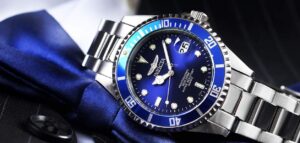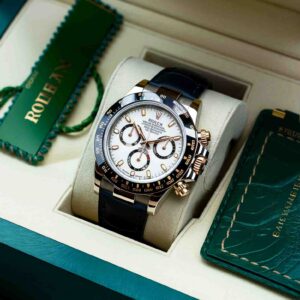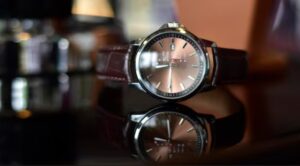If you’ve ever asked, “Where are Citizen watches made?”, you’re not alone. Citizen is a globally trusted brand, and many wearers want to understand how and where those timepieces originate. Known for its precision engineering and Eco-Drive technology, Citizen combines Japanese craftsmanship with global manufacturing efficiency to create watches that balance quality and affordability. In this article, you’ll get a clear, friendly explanation of the manufacturing story behind Citizen watches — from raw components to final assembly, and what it means for you as a buyer looking for reliability, heritage, and value.
The Japanese Heart of Citizen
Citizen Watch Co., Ltd., a Japanese company, remains rooted in Japan when it comes to its core technologies and manufacturing capabilities.
Movements & Technology
- Many of Citizen’s signature movements (including Eco-Drive solar and partner mechanical movements by Miyota) are developed and manufactured in Japan.
- Japan remains a centre for R&D, quality control and the highest-end watchmaking within the brand. For example, some of the top-tier lines are fully made in Japan.
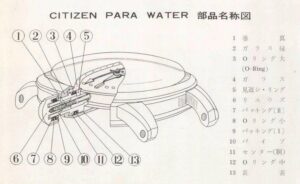
Image source: citizenwatches
“Made in Japan” vs. “Japan Mov’t”
Understanding the labels you see on the case or dial matters:
| Label on Case | What it Typically Means |
| “Made in Japan” | Final assembly (and often significant manufacturing) took place in Japan — the watch meets origin rules for Japanese production. |
| “Japan Mov’t” (or “Japan Movement”) | The movement is made in Japan, but the case, bracelet, or final assembly may have happened elsewhere (e.g., Thailand, China). |
Global Manufacturing & Assembly Outside Japan
While Japan remains Citizen’s manufacturing core, the brand also uses facilities and partners in other countries. This helps broaden price points, serve global markets and maintain competitive value.
1 Thailand
The company lists manufacturing facilities in Thailand. For example, Citizen Watch Manufacturing (Thailand) Co., Ltd. is located in Ayutthaya.This facility often handles assembly or component production for certain models.
2 China
There are manufacturing and trading offices in China (e.g., in Beijing). In some cases, bracelets or assembly work is done in China for certain models.
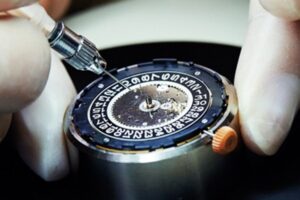
Image source: citizen.com.my
3 What This Means for Consumers
- A watch may carry Citizen’s Japanese-made movement but still be assembled outside Japan.
- The quality standard is controlled by Citizen globally, but assembly location and materials may vary depending on model and price tier.
- If you prioritize “100% made in Japan”, look for clear “Made in Japan” labeling rather than simply “Japan Mov’t”.
Quick Comparison Table: Locations, Components & How to Interpret
Here’s a handy table to summarise the manufacturing story of Citizen watches:
| Region / Location | Common Role in Citizen Manufacturing | How to Interpret on the Watch |
| Japan | Movements, major R&D, premium models, final assembly | Label: “Made in Japan” → highest Japanese origin |
| Thailand | Assembly, components for certain models | Label might show “Cased in Thailand” or no location |
| China | Parts (cases/bracelets), assembly for value models | Label might say “Japan Mov’t” + other location |
| Global (various) | Distribution, sales, non-core manufacturing | Doesn’t directly affect where core parts were made |
Why Does It Matter?

Image source: citizenwatches
1 Quality Perception & Assurance
Citizen’s reputation rests on reliability, innovation and long-term performance. Some buyers feel that a watch “made in Japan” offers a stronger assurance of craftsmanship. While many assembly sites are outside Japan, Citizen maintains its standards for all production.
2 Pricing & Value
By using global manufacturing and assembly sites, Citizen offers watches across a range of budgets. A watch assembled in Thailand or China may cost less than one fully built in Japan — but the movement being Japanese still preserves much of the brand’s engineering legitimacy.
3 Transparency for Buyers
Knowing how to read the markings (“Made in Japan”, “Japan Mov’t”, or other origin phrases) helps buyers make informed decisions. It’s not just about “Japan or not” — it’s about which parts and assembly were done where, and whether that aligns with your priorities.
When You’re Buying: Practical Tips
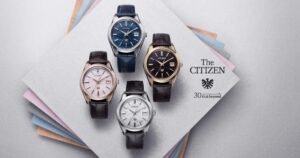
Image source: CITIZEN WATCH Global
- Check the case back/markings: Look for origin wording like “Made in Japan”, “Japan Mov’t”, or country of assembly.
- Consider the model line: Premium lines may be more likely to have full Japanese manufacture; entry tiers may use global lines.
- Don’t assume all global-assembled models are lower quality: Citizen enforces its internal standards globally, but assembly location can affect value and collector perception.
- Check authorised dealer and documentation: Authenticity matters — genuine Citizen watches will provide serial numbers, warranty cards and proper packaging.
- If origin is critical for you: Focus on Citizen models explicitly labelled “Made in Japan” and marketed accordingly.
FAQs
Are all Citizen watches made in Japan?
No — while Citizen’s movement technology and many core components are manufactured in Japan, final assembly or component production may occur in other countries such as Thailand or China.
If my Citizen watch says “Japan Mov’t”, does that mean it was made in Japan?
Not necessarily. “Japan Mov’t” means the movement inside is Japanese-made, but the case, bracelet or final assembly may have been done elsewhere.
Does a non-Japanese assembly location mean lower quality?
Not automatically. Citizens maintain global quality standards, but assembly location can influence material choices, finishing levels and price. Some buyers prefer Japanese assembly for perceived premium status.
How can I identify a Citizen watch with full Japanese manufacture?
Look for clear markings such as “Made in Japan” on the dial/case back, and research whether the model belongs to a high-end tier marketed as Japanese made.
Why do citizens use manufacturing outside Japan at all?
Global assembly and component manufacturing allows Citizen to serve various market segments, reduce cost pressures and deliver value-priced watches without sacrificing the brand’s core Japanese movement technology.
Final Thoughts
When you ask “Where are Citizen watches made?”, the succinct answer is: the core technology and many high-end watches are made in Japan, but Citizen uses a global network of manufacturing and assembly sites (such as Thailand and China) for components and finished watches. The key is understanding what each marking means and what matters most to you — movement origin, assembly origin, price, and value.
By knowing how to interpret the labels and the manufacturing story, you can choose a Citizen watch that aligns with your expectations for craftsmanship, origin and investment.
Feature Image source: Jack Forster | Substack


